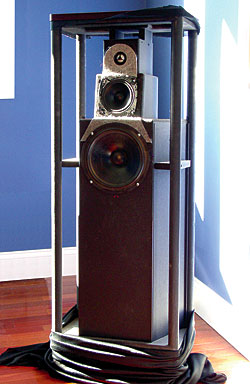I wrote in
my post #931 on my project thread as follows;
Here in this post, please let me emphasize again about the pros and merits of relative gain (
i.e. tone) control not only in digital domain but also in analog domain using pre-amplifiers or integrated-amplifiers (in my setup). I recently wrote again in
my post #56 on a remote thread like these;
Yes, as for safe and flexible tone controls (or I can say "relative gain controls among the multiple SP drivers"), my stance (policy) at least, is that we are encouraged to utilize the "best combination" of "DSP configuration in digital domain" and "analog domain tone controls using HiFi-grade preamplifiers and/or integrated amplifiers".
We need to note (and to respect for) that analog domain tone controls (relative gain controls among the multiple SP drivers) give no effect nor influence at all on the upstream DSP configuration (XO/EQ/Gain/Phase/Polarity/Group-Delay). I believe that this is a great merit of flexible tone controls in analog domain. We know well, on the other hand, in case if we would like to do the "tone/gain controls" only within DSP configurations, such DSP gain controls always affect more-or-less on "XO" "EQ" "phase" and "delay" of the DSP settings which will leads you to possible endless DSP tuning spirals every time; within DSP configurations, XO EQ Gain Phase and Delay are always not independent with each other, but they are always interdependent/on-interaction.
Just for your possible reference, my DSP-based multichannel multi-SP-driver multi-amplifier active system has flexible and safe analog level on-the-fly relative gain controls (in addition to upstream on-the-fly DSP gain controls) for L&R subwoofers, woofers, midrange-squawkers, tweeters, and super-tweeters, all independently and remotely. My post here shows you a typical example case for such safe and flexible on-the-fly analog-level tone controls. This my post (as well as this post) would be also of your interest.
Of course, I know well that I (we) can also perform such relative gain control using DAC8PRO’s 8-channel output gain controllers. I do not like, however, to change the DAC8PRO’s output levels frequently on-the-fly (while listening to music) due to safety and inconvenience concerns; I like to keep DAC8PRO’s analog out gain level always at constant -4 dB which should remain to be usually “untouchable” in my case.
One of the very unique aspects/features of my multichannel audio rig is that I fully utilize four HiFi-grade “integrated amplifiers” plus L&R active subwoofers, each of them have its own gain (volume) controller for safe and flexible relative gain (tone) control in analog domain even on-the-fly
i.e. while listening to music.
In this perspective, my posts
#438 and
#643 should also give you better understandings. Furthermore, my posts
#317(remote thread),
#313(remote thread) would be also of your reference and interest.

